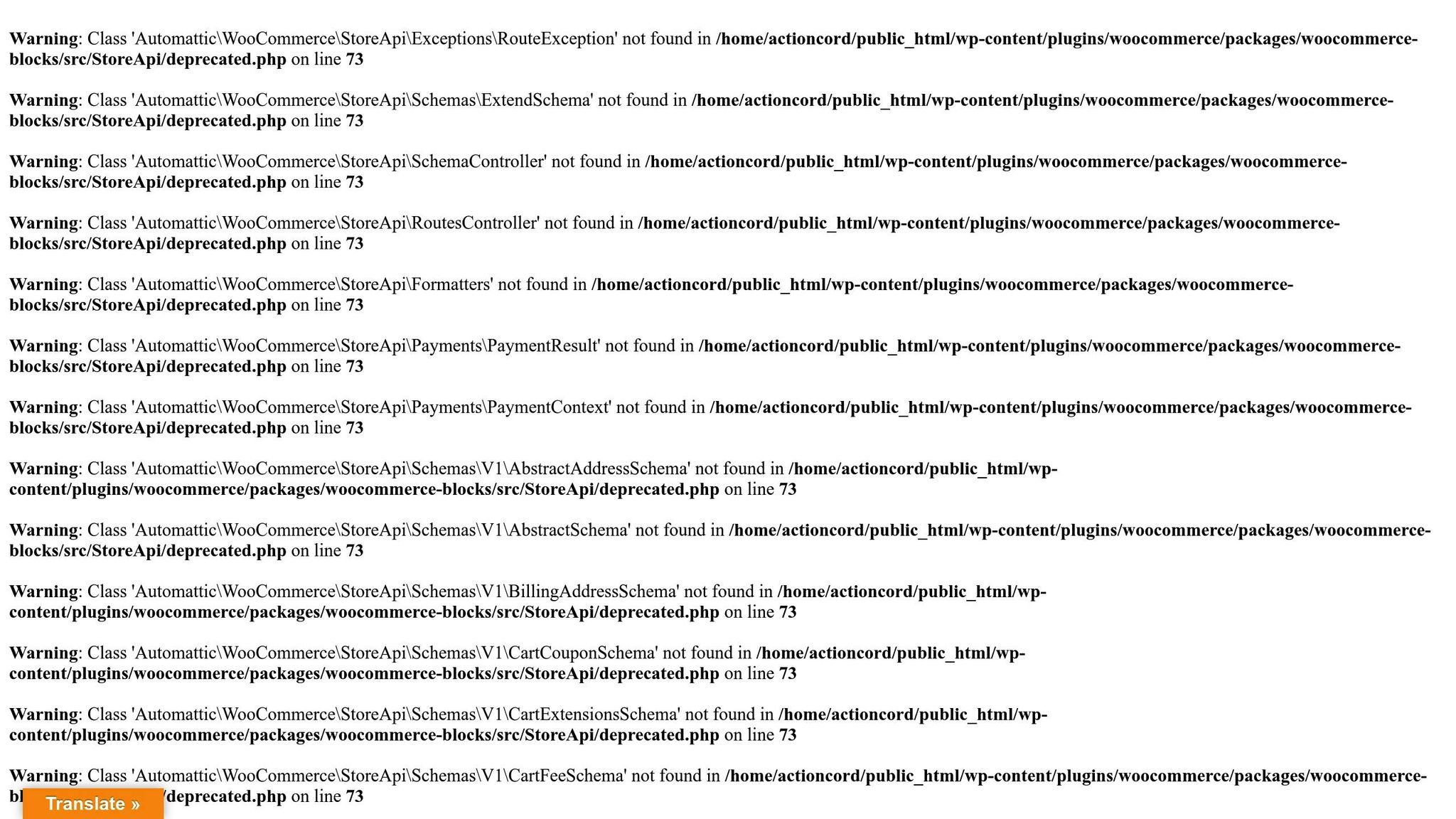Member feedback is the key to better retention and improving your gym's services. Gyms that actively use feedback retain 87% of members after six months, while 52% of cancellations happen without warning. Collecting feedback can help you address issues early and boost revenue by 25%-95%. Here are six practical ways to gather and act on member feedback:
- QR Code Feedback Stations: Place QR codes in high-traffic areas for quick, on-site feedback.
- Post-Workout Email Surveys: Send short surveys 2-3 hours after workouts to capture fresh impressions.
- Built-in Software Tools: Use gym management software to automate feedback collection and analysis.
- Equipment Status Reporting: Let members report equipment issues instantly via QR codes or apps.
- Member Experience Tracking: Monitor satisfaction at key milestones like onboarding and 30-day check-ins.
- Private Feedback Channels: Offer secure, anonymous channels for sensitive member concerns.
Quick Comparison
| Method | Best For | Cost Per Member/Month | Response Rate | Setup Time |
|---|---|---|---|---|
| QR Code Stations | All gym sizes | $0.10–$0.50 | 89% | ~90 minutes |
| Email Surveys | 50–500 members | $1–$2 | 12–15% | ~1–2 days |
| Built-in Software Tools | 100+ members | $2–$5 | N/A | 3–5 days |
| Equipment Reports | Maintenance tracking | $0.50–$1.50 | 90% | ~1 day |
| Experience Tracking | 200+ members | $3–$5 | 35% (under 35) | ~3–5 days |
| Private Feedback Channels | Small gyms (<50) | $0.10–$0.30 | 28% (over 50) | ~1–2 days |
Why It Matters
Listening to your members and acting on their feedback builds trust, improves satisfaction, and keeps them coming back. Start small with QR codes or email surveys, or go deeper with built-in tools and experience tracking. Whatever you choose, the key is to act quickly on feedback and show members that their input makes a difference.
Fitness Management Software: A Comprehensive Solution Built on CORD's Low-Code Platform

1. QR Code Feedback Stations
QR code feedback stations offer a quick and convenient way for gym members to share their opinions while they're still on-site. These digital tools make it easy to gather feedback and often lead to higher response rates due to their simplicity.
Where to Place Them
The key to success is putting QR codes in spots where members naturally stop during their visit. Think about areas like the reception desk, locker rooms, changing areas, or even on membership cards. Strategic placement can make a big difference in engagement.
How to Make It Effective
Customize the QR code system with your gym's branding - logo and colors - to build trust. Keep the feedback forms short and simple; members should be able to complete them in under 30 seconds.
| Area | Purpose | Recommended Question Types |
|---|---|---|
| Equipment Room | Equipment condition | Quick ratings, issue reporting |
| Group Fitness Areas | Class feedback | Instructor ratings, schedule input |
| Locker Rooms | Facility cleanliness | Cleanliness scale, maintenance needs |
| Front Desk | Overall experience | General satisfaction, service quality |
Encourage Participation
Offer small rewards to motivate members, such as a free smoothie, a guest pass, or entry into a monthly prize drawing. Make sure to emphasize that their feedback is confidential and will directly improve their experience.
Monitor and Improve
Use analytics to track how often QR codes are scanned and identify the best locations. Dynamic QR codes allow you to update forms without reprinting materials, making it easy to adapt to seasonal needs or refine questions.
Respond to feedback quickly. When members see their suggestions lead to real changes, they’re more likely to share their thoughts again. Analyze response trends to find the best times to collect feedback and adjust your approach accordingly.
Pro Tip: Add simple instructions like "Scan to share your thoughts in 30 seconds!" next to each QR code to make it clear and inviting.
2. After-Workout Email Surveys
After-workout email surveys are a great way to gather fresh feedback. Sending these surveys shortly after a workout helps you spot potential issues early and gain insights to improve your facility.
Timing Matters
Send surveys 2–3 hours after checkout to capture members’ impressions while they’re still fresh. Tailor the timing to key milestones:
| Milestone | Survey Focus | Recommended Timing |
|---|---|---|
| Post-Workout | Equipment and facility feedback | 2–3 hours after checkout |
| New Member | Onboarding experience | After the first week |
| Regular Check-in | Overall satisfaction | Every 30 days |
| Special Events | Event-specific feedback | Within 24 hours |
This approach ensures you’re gathering relevant, timely feedback.
Keep It Short and Simple
Design surveys that are quick and easy to complete. Use short rating scales and include just one open-ended question. Let members know upfront that the survey will take only 2–3 minutes.
Encourage Participation
Offer small incentives to motivate members to take the survey. These rewards don’t have to be expensive but can significantly increase response rates.
Use Feedback to Drive Action
Monitor your Net Promoter Score (NPS) to identify issues and track changes in satisfaction. When feedback highlights a problem, address it quickly. For example, resolving issues tied to a drop in NPS can help maintain member satisfaction.
Pro Tip:
Improving member retention by just 5% can increase revenue by 25% to 95%. Use survey feedback to resolve problems before they cause members to leave.
Leverage Digital Tools
Use survey platforms that connect with your gym management software. These tools can automate survey distribution and analyze data, making it easier to identify trends and take action.
3. Built-in Software Feedback Tools
Modern gym software comes with integrated tools designed to gather and analyze member feedback. These tools work alongside methods like QR codes and email surveys, giving gyms a more complete picture of member opinions.
Real-Time Feedback Collection
These tools allow gyms to capture feedback right after key moments - like classes, training sessions, or facility visits. This adds an extra layer to your feedback process, complementing other methods already in place.
Turning Feedback Into Action
With built-in analytics, feedback is turned into actionable data. Metrics such as Net Promoter Score (NPS) help track member satisfaction, spot trends, and address member needs promptly.
Streamlined Communication
Once feedback is collected, automated systems can send thank-you messages for positive reviews or immediately notify staff about issues that need attention.
Improving Member Participation
Mobile-friendly feedback tools make it easier for members to share their thoughts. This convenience often leads to higher participation rates and better insights.
Pro Tip:
Set up your system to send newsletters highlighting changes made based on member feedback. This shows members their opinions matter and helps foster stronger connections.
Quick Action on Negative Feedback
The software notifies staff as soon as negative feedback comes in. This fast response is crucial, as gyms risk losing up to 50% of their members each year if concerns are ignored.
4. Equipment Status Reports
Keeping gym equipment in top condition is essential for both member satisfaction and safety. A reliable system for reporting equipment issues not only ensures high standards but also shows members that their input matters.
Using real-time digital tools, equipment status reports focus on safety and maintenance. A simple system, like placing QR codes on each machine, allows members to report issues instantly through their smartphones. This quick action helps prevent hazards and ensures problems are addressed promptly.
A centralized dashboard tracks all reported issues, giving staff a clear view of equipment status. This system helps prioritize repairs, log maintenance history, and spot usage trends. By streamlining the process, it becomes easier to resolve problems quickly and efficiently.
Keep members informed about maintenance updates through automated alerts. Consistent communication builds trust and reassures members that the gym takes their concerns seriously and prioritizes safety.
Regular equipment maintenance not only ensures safety but also strengthens member loyalty. As Gym Technician explains, "Exercise enthusiasts are more likely to continue their memberships if they trust the facility to maintain machines properly".
Set up a maintenance schedule that aligns with how often equipment is used. This preventive approach can catch potential problems early, reducing downtime and keeping members happy.
"Regular and thorough maintenance of gym equipment is crucial in providing a seamless and satisfying experience for your members." – Again Faster
Best Practice Tip
Use timely equipment reports to improve operations, just like other feedback methods guide decisions. Partner with trusted maintenance providers to guarantee high-quality repairs, emphasizing your commitment to safety and member satisfaction.
sbb-itb-1efabb1
5. Member Experience Tracking
Understanding your members' fitness journey is crucial. By tracking key moments, you can spot potential issues early and make meaningful improvements to your gym services. This approach not only helps prevent cancellations but also enhances overall satisfaction.
Why Tracking Matters
Monitoring satisfaction at every stage of the member journey keeps engagement high. When gyms actively address member needs, they create a better experience and foster loyalty.
How to Track Member Experiences Effectively
-
Key Touchpoint Surveys
Collect feedback at critical points:- After onboarding
- At the 30-day mark
- Through quarterly satisfaction checks
- After special events
-
Performance Monitoring
Keep tabs on member progress with:- Regular fitness assessments
- Body composition scans
- Monthly progress reviews
- Recognition of achievements
These methods offer continuous insights into member satisfaction. Digital tools can streamline this process, providing a complete view of each member's journey. Automated alerts can even flag issues early, so you can take action before they escalate.
Member Journey Milestones
| Milestone | Method | Action Step |
|---|---|---|
| Onboarding | Welcome Survey | Address initial concerns |
| 30-Day Check-In | Progress Review | Evaluate early progress |
| Quarterly Follow-Up | Satisfaction Survey | Measure long-term engagement |
| After Events | Feedback Request | Improve event planning |
Pro Tip: Use NPS for Early Warnings
Monitoring Net Promoter Score (NPS) trends is a smart way to catch shifts in member satisfaction. Set up alerts for when scores dip below a certain level, allowing you to respond promptly.
The Impact of Experience Tracking
Great experiences matter. Brands that focus on customer experience generate 5.7 times more revenue. Additionally, 73% of customers say a positive experience is essential for loyalty. By systematically tracking and responding to feedback, gyms can strengthen relationships and uncover ways to improve their services.
Combine these insights with other feedback channels to refine your retention strategies even further.
6. Private Feedback Channel
A private feedback channel is a secure way to handle sensitive issues, offering members a safe space to share concerns while maintaining confidentiality. This approach builds trust and ensures important matters are addressed effectively.
Setting Up a Confidential System
Using digital tools, members can submit feedback anonymously, while staff can efficiently track and respond. Here's what you need:
- Secure submission forms for anonymous feedback
- Confidential tracking systems to monitor responses
- Staff notifications to ensure timely action
- Resolution timelines to stay on schedule
- Follow-up tools to maintain communication
Best Practices for Managing Private Feedback
| Phase | Action | Timeline |
|---|---|---|
| Receipt | Acknowledge feedback | Within 24 hours |
| Assessment | Review and categorize | 1–2 business days |
| Response | Develop action plan | 2–3 business days |
| Resolution | Implement solution | 5–7 business days |
| Follow-up | Check satisfaction | 48 hours post-resolution |
How It Impacts Member Retention
Private feedback channels are directly linked to better member retention. Research shows that increasing retention by just 5% can lead to a revenue boost of 25% to 95%.
Staff Training for Effective Feedback Management
To handle feedback effectively, staff should be trained in these areas:
- Active listening to fully understand concerns
- Conflict resolution to address issues constructively
- Proper documentation to keep records organized
- Confidentiality protocols to protect member privacy
- Timely responses to maintain trust and satisfaction
Monitoring and Resolution Best Practices
To ensure success, track these elements:
- Time taken for the first response
- Progress on resolving issues
- Member satisfaction after resolution
- Recurring problems that need systemic fixes
- Staff responsiveness and efficiency
Continuous Improvement Process
Use feedback from this channel to improve overall operations:
-
Spot Trends
Identify recurring concerns and address root causes. -
Track Response Times
Ensure your team resolves issues quickly and effectively. -
Gauge Satisfaction
Use follow-up surveys to measure how well resolutions meet member expectations.
This private feedback channel complements other tools by ensuring every member's voice contributes to meaningful changes and improvements.
Method Comparison
Let’s break down the performance of various feedback methods to help you make informed choices.
Setup and Implementation
The time and effort required to implement each method vary. For instance, QR code stations can be set up in about 90 minutes using free tools. On the other hand, built-in software typically takes 3–5 days to implement and train staff.
Response Rates by Method
Here’s how different feedback methods perform in terms of response rates, target audience, and costs:
| Method | Response Rate | Best For | Implementation Cost |
|---|---|---|---|
| QR Code Stations | 89% | All gym sizes | $0.10–$0.50 per member/month |
| Email Surveys | 12–15% | 50–500 members | $1–$2 per member/month |
| Built-in Software | N/A | 100+ members | $2–$5 per member/month |
| Equipment Reports | 90% (maintenance) | 50+ members | $0.50–$1.50 per member/month |
| Experience Tracking | 35% (under 35) | 200+ members | $3–$5 per member/month |
| Private Channels | 28% (over 50) | Less than 50 members | $0.10–$0.30 per member/month |
Effectiveness by Gym Size
Smaller gyms, like boutique studios with fewer than 50 members, benefit from straightforward feedback methods. Larger facilities, however, often require more advanced systems to manage their scale effectively.
"The system auto-generated 78% of maintenance requests from equipment feedback, reducing survey setup time from 14 hours to 35 minutes per location."
- Mindbody Customer Success Reports, January 2024
Data Quality Assessment
Each method brings unique strengths to the table:
- Real-Time Feedback: Tools like equipment reports and built-in software speed up issue resolution, often within 24 hours.
- Detailed Insights: Private channels capture 40% more in-depth feedback, while surveys provide easy-to-analyze metrics.
- Member Engagement: Using multiple feedback channels increases actionable responses by 41% and reduces member churn by 18%.
Cost-Benefit Analysis
Here’s a closer look at the costs and benefits of each option:
- QR Code Stations: Perfect for high-traffic areas, costing $0.10–$0.50 per member/month.
- Quarterly Email Surveys: Suitable for mid-sized gyms, with costs ranging from $1–$2 per member/month.
- Built-In Feedback Tools: Ideal for daily tracking in larger gyms, priced at $2–$5 per member/month.
Integration Considerations
To maximize results, combine methods based on:
- Member demographics and preferences
- Staff familiarity with technology
- Budget limitations
- Operational hours
- Facility size and layout
For example, Equinox uses both digital and paper feedback forms in locker rooms, which has increased participation by 22%.
Conclusion
Feedback systems play a crucial role in keeping members satisfied and improving gym operations. The trick is to choose methods that fit your gym's size, budget, and the preferences of your members.
If you're just starting out, simple options like QR code stations can be an easy way to gather input. Mapping out your members' journey can also help you identify the best moments to ask for feedback. This ensures your approach is both thoughtful and aligned with what your members need.
Experts agree: good feedback systems lead to real improvements. Organizing feedback into clear categories makes it easier for gyms to focus on specific areas for growth.
As David Osorio puts it:
"Listen to your members, assess the feedback objectively, and improve in the ways that align with your vision and intuition."
The best results come when you mix different feedback methods to suit your gym's unique requirements and clearly communicate the changes you're making. Guy Griffiths emphasizes this point:
"If you actually listen to members and tell them what you're hearing to prove you're listening that will help your member retention."
FAQs
How can collecting member feedback help significantly boost gym revenue?
Listening to member feedback is one of the most effective ways to improve retention and grow revenue. Studies show that even a 5% increase in member retention can lead to a 25% to 95% boost in revenue. This is because satisfied members are more likely to renew their memberships, recommend your gym to others, and engage in additional services like personal training or classes.
By implementing feedback systems such as surveys, suggestion boxes, or gym management software, you can identify what members value most and address any concerns proactively. This not only enhances their overall experience but also fosters loyalty, which directly impacts your bottom line.
What are the benefits of using QR code feedback stations in your gym?
QR code feedback stations make it incredibly easy for members to share their thoughts. By simply scanning a code with their smartphone, they can provide feedback in seconds, eliminating the need for paper forms or lengthy online surveys. This approach is quick, user-friendly, and cost-effective.
Additionally, QR code stations allow you to collect feedback in real time, whether it's about equipment, cleanliness, or staff interactions. This instant insight helps you address issues faster and show members that their opinions matter, boosting overall satisfaction and retention.
What are the best ways for gyms to gather and use member feedback to improve satisfaction and retention?
To improve member satisfaction and retention, gyms can combine multiple feedback methods to gather valuable insights. Tools like surveys, feedback kiosks, and gym management software make it easy to collect opinions and identify trends.
Once feedback is collected, use it to make meaningful changes. For example, address common concerns, enhance services, or introduce new programs based on member preferences. Regularly acting on feedback shows members that their input matters, fostering loyalty and trust.


